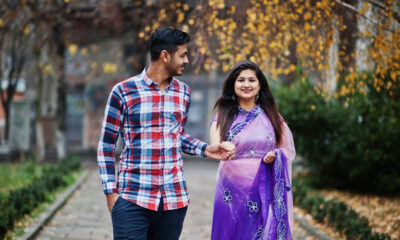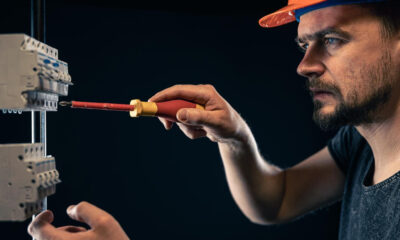The Telugu Hindu Marriage is the traditional marriage ceremony of the Telugu people from the states of Andhra Pradesh and Telangana in India. Just like any other Indian weddings, Telugu weddings are full of life, colors and enriched with customs and rituals. In this article, we will talk about 15 Telugu Hindu Wedding Rituals which you can include for your traditional Indian wedding.
Did you know that in the 19th century, a traditional Telugu Hindu marriage ceremony lasts up to 16 days (Padahaaru Rojula Panduga)? Nowadays, however, it has been cut short up to 2–5 days.
1. Mangala Snanam
Mangala Snanam is part of the bride (Pellikuthuru) and groom (Pellikodudku) making ceremony or wedding shower. This ceremony can take place several times. Some have it twice, once before the day of the wedding and once on the marriage day.
The Haldi ceremony precedes this ritual where the bride and groom (at their respective homes) are spread with Haldi paste by their friends and family. Then they are given a holy bath with turmeric water. This is to purify their body and mind before the sacred ritual of the wedding. Turmeric also has skin-beneficial properties that enhance the radiance of the bride and groom.
After the Mangala snanam, a “Mangala Aarti” is conducted where a small lamp is lit, placed on a Thali (plate) along with turmeric, vermilion, and sandalwood. The thali is circled in front of the bride and groom to remove any evil eyes and seek blessings from the Almighty.
2. Ganesh and Gowri Puja
Ganesh Puja is conducted by the groom at the wedding venue whereas Gowri Puja is done at the bride’s house. The bride offers her prayers to Devi Gauri as she is the symbol of fertility and motherhood. She prayers for an ideal relationship that the goddess has with her husband, Lord Shiva.
Before the bride enters the Mandap(wedding stage), the groom performs the Ganesh Puja. Any auspicious occasion begins with Ganesh pooja in Hindu religion as Lord Ganesha is believed to be the remover of any obstacles. Therefore, Ganesh puja is the first ritual which is conducted at the venue.
3. Bride and Groom’s entry at the Venue
The groom and the bride entered separately on the Mandap. The bride is seated in a straw basket and is transported to the Mandap by her maternal uncle.
The bride’s brother washes the groom’s feet at the entrance and welcomes him and his family to the Mandap.
The Jeelakara Bellam is a ritual where the priest the bride and the groom are not supposed to look at each other and hence a curtain is placed in between them. This is called Terasala (‘tera’ means screen).
4. Kanyadaan and Panigrahanam
Kanyadaan means “giving away the bride”. This is an emotional ceremony where the bride’s family officially gives her hand to the groom.
The bride’s parents wash the groom’s feet as he is considered a embodiment of Lord Vishnu who has come to marry their daughter who is considered Goddess Lakshmi.
The bride’s parents place their daughter’s hand in the groom’s hand and give away their daughter. As per Hinduism, ‘Kanyadaan’ is a highly noble act a father can perform.
Next, the groom is asked to hold the bride’s hand. This is called “panigrahanam” and a promise to the bride’s parents that he will take care of her and be her companion in life’s highs and lows.
This Mantra is uttered thrice by the groom – “Dharmecha, Artecha, Kamecha, Thaya Aham Evam Naati Charami!”
It translates to “Righteous, financially, by desire, spiritually, I will not walk away from her..!”
5. Jeelakkarra Bellam or Sumuhurtham
This is a main event of Telugu Hindu marriage. “Jeelakara” means Cumin and “Bellam” means Jaggery. The ritual begins by giving a paste of cumin and jaggery on the hands of the pair. At an auspicious time. Sumuhurtham, the couple places this paste on each other’s heads while moving their hands above the curtain. This is the point where the couple are officially husband and wife as the veil between them is removed.
The paste of cumin and jaggery symbols that the couple will stick together through bitter and sweet phases of life. It is also believed that the couple exchanges each other’s thoughts and destinies entangling their lives by applying this paste on each other’s heads.
The elders bless the couple with Akshata while the younger ones greet them.
6. Madhuparakam
After the Jeelakara-Bellam, the bride and the groom leave to their respective grooms to change into ‘Madhuparakam’. The Madhubarakam dress code is white saree with a red, yellow or green border. The white color indicates purity or loyalty and the red/yellow/green indicates strength – the vital characteristics of any marriage.
After changing into new clothes, the bride and the groom return to the Mandaap for the next set of rituals.
7. Mangalsutra Dharana
The Mangalsutra or Thaali has huge significance in Hindu weddings. Mangalsutra is a sacred yellow thread lubricated with turmeric. Attached are two gold pendants called “Sutralu” that is tied by the groom around the bride’s neck in three knots amidst “sannai mellam” (Shehnai).
The three knots symbolize the groom’s promise to accept the bride as his wife by three means – Manasa (thoughts), Vacha (speech), and Karmana (actions). The ritual symbolizes the complete union of the couple – physically, mentally and spiritually.
Mangalsutra or the necklace is an identification of a married woman in Hinduism. The yellow thread is replaced with a gold chain on the 16th day from the marriage.
8. Talambralu
One of the fun parts of the Telugu Hindu wedding rituals is Talambralu (rice mixed with turmeric) where this mixture is poured on each other’s head like a shower. Enjoyed by not only the newlyweds but also the family, it is kind of an ice-breaker between the bride and the groom.
The first three times, the couple shower the “Talambralu” on each other properly and after that, it becomes a competition on who pours more. Today, rose petals, pearls and colored thermacol balls are also mixed with rice and used to shower on each other.
In the spirit of the competition, the friends and family gather on respectively sides of the couple and pull them back as the other tries to pour the Talambralu.
9. Dandalu – Garland exchange
After Talambralu, the bride and groom exchange Jaimaala that indicate the bride and groom accepting each other as life partners.
10. Sthalipakam and Nalla Pusalu
In this ritual, the bride’s maternal uncle adorned the second toe of the bride with a silver toe ring. It is then followed by the groom decorating the bride with a necklace of gold and black beads called “Nalla Pusalu” in Telugu. The black beads free the bride from the influences of the evil eye.
In South India, the importance of Mangalsutra is big. Apart from Thaali or Mangalsutra, Nalla Pusalu, and Toe ring are recognized as a symbol of married women just like the wedding ring in Western countries.
Aside from cultural significance, wearing silver toe rings offers health benefits. As per Ayurveda, toe rings regulate the menstrual cycle and increase chances of pregnancy. Also, the pressure felt on the second toe while walking relieves the pain during intercourse.
11. Saptapadi
Saptapadi means “seven” and “padi” means steps. This ritual is done differently in different regions. In some traditions, the bride and the groom take seven steps around the holy fire (homam). The groom leads the first three rounds whereas the bride leads the next four.
In Telugu tradition, seven steps involve the bride touching 7 betel nuts while the groom holds bride’s hand. The bride and the groom press each other’s toe 3 times which signifies equality in the marriage. The seven steps symbolize the seven vows of marriage.
- to nourish one another.
- to grow together in power.
- to conserve our wealth.
- to share our joys and sadness.
- to take care of our joys and sorrows.
- To take care of our children and parents.
- to stay friends lifelong.
12. Brahma Mudi
After the Talabralu and Dandalu, Brahma Mudi is performed. In this ritual, a set of betel nut, dried dates, turmeric twig, betel leaf, and some currency coins are tied to the loose ends of the bride’s saree and the groom’s Kanduva (Shawl). This resembles the Gaat Bandhan ritual in North Indian wedding. These two knots (of the bride and the groom) are tied together which is called the Brahma Mudi. It shows that both the bride and groom must maintain good relations with both the families.
13. The Ring Game
This is one of the most fun-filled rituals of not just Telugu wedding but North Indian weddings as well. In this “Finding the ring” ritual, two rings are dropped (one gold and one silver) in a water pot.
The bride and the groom place their right arm into the pot to see who picks the gold ring first. Three series of this game are conduct. In the best of three series, whoever finds the gold ring twice is the winner and is meant to have an upper hand in marriage. This ritual can be quite fun for both the families as they cheer their respective side.
14. Arundathi Nakshatram
In this ritual, the couple is taken out of the Mandap by the Pandit to spot the Arundhati and Vasistha nakshatram(star) in the sky. The groom pointed out to the stars to his bride. Arundhati and Vasistha represent an ideal couple and are therefore shown as an example to the couple.
15. Appagintalu
The final ceremony in a Telugu Hindu wedding is Appaginthalu where the bride’s family officially hands over the bride to the groom’s family. After this ceremony, the bride leaves the Mandaap with the groom to his home. This is fairly an emotional moment for the bride and the family.
Finding the perfect partner is just a click away. We, at Matrimony Indians, help you find the perfect soul mate. Register online today to find your ideal husband.




















